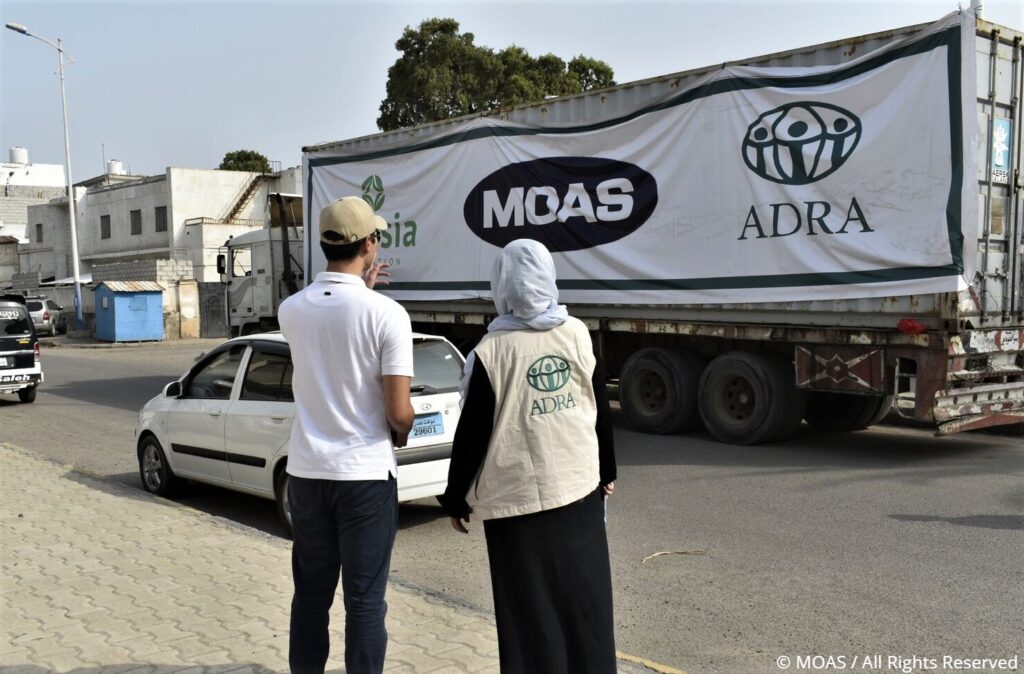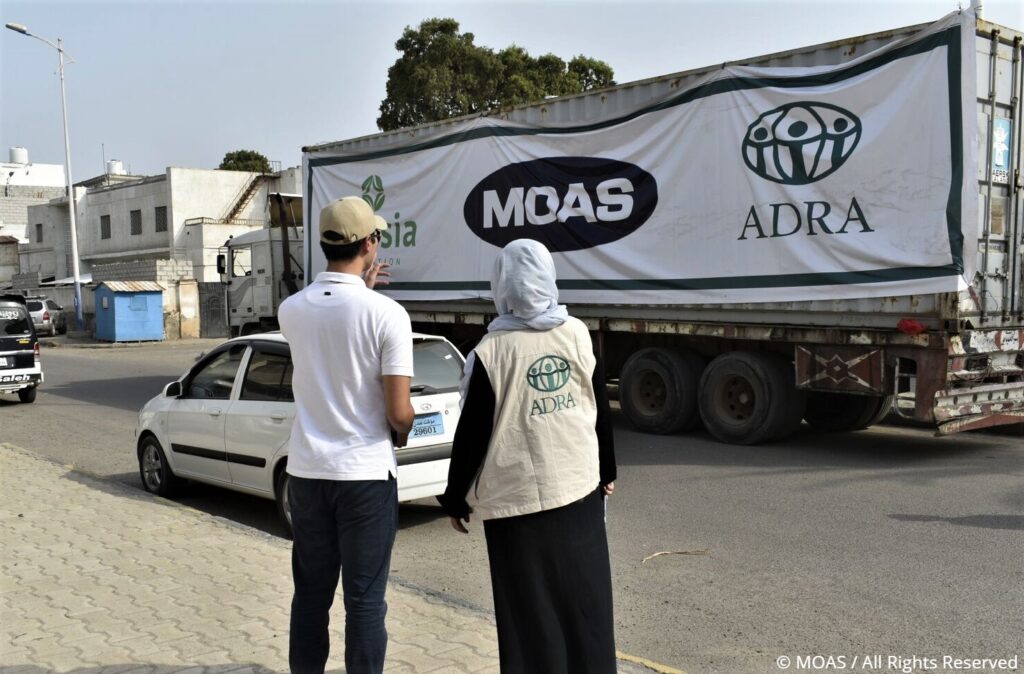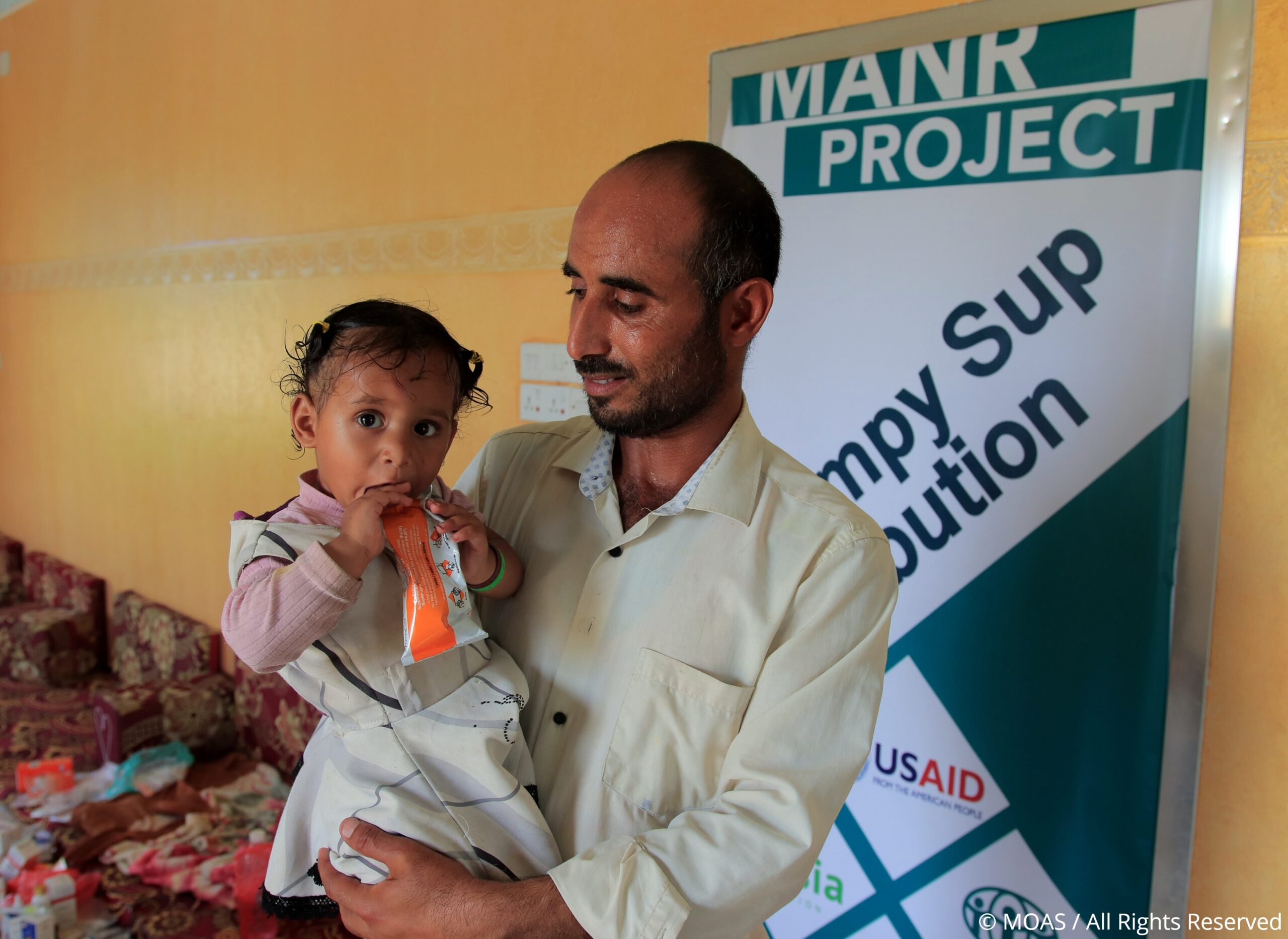On the 16th of October each year, World Food Day is commemorated with the aim of promoting global awareness and action on issues relating to food security, hunger, and nutrition. This year, the international day comes amid the COVID-19 pandemic, which is endangering the food security of millions of people around the world. Prior to the virus’ outbreak, over 820 million people were identified as chronically food insecure, and 135 million were experiencing crisis levels of hunger or worse. However, due to the pandemic, an additional 130 million people could be driven to the verge of starvation by the end of 2020.
The implications of COVID-19 are likely to be especially severe for people residing in contexts in which the effects of conflicts, natural hazards and other threats, such as locust infestations, are already significantly undermining food security. A context in which this situation is particularly alarming is Yemen, where the ongoing conflict has created the world’s worst humanitarian crisis, causing over 24 million people to depend on humanitarian assistance. Yet now, the combination of the pandemic along with a resurgence in fighting, decreased humanitarian funding and access, losses of income, hikes in food prices, and increased displacement, is threatening to further exacerbate the already critical situation and push 3.2 million people towards acute food insecurity.
Despite the immense difficulties being faced, many humanitarian organisations are undertaking considerable efforts to alleviate the suffering being experienced throughout the country, by distributing food aid and implementing programmes to enhance food security. This is exemplified by the tireless work of MOAS’ in–country partner, ADRA Yemen. In honour of the occasion of World Food Day, we spoke to ADRA’s Director of USG Programs and Partnerships in Yemen, Mohammed Bahashwan, to gain a greater insight on the food security challenges being faced in Yemen and what organisations like ADRA are doing to help vulnerable communities throughout the country.
What are the main causes of food insecurity in Yemen?
“I would say the worst part of the crisis in Yemen is food insecurity. Yemen has been suffering from food insecurity even before the current crisis, now the war is pushing most of the country to the brink of famine. We’ve seen that it is becoming extremely difficult to resolve food insecurity as a nation. Food insecurity is a complex, complex area to support and to resolve. Within this humanitarian crisis, the main drivers of food insecurity have been the continuous conflict between parties, the continuous displacement of people across the country, the collapse of basic services, collapse of infrastructure. They have pushed food insecurity to higher limits.
Of course, economic collapse due to the conflict, has made access to either food or means to get food, or to secure proper intake for families much more challenging. And as we know, this war in Yemen has been continuous for the past five years, and as a result, millions of people remain extremely malnourished, extremely hungry, prone to hunger if they’re not hungry right now, prone to famine, prone to illnesses and other acute vulnerabilities.
Among many causes of food insecurity is the conflict, but of course there are by-products of that conflict including displacement, lack of access to health services, lack of access to nutrition services, lack of access to livelihood means and income generating means. Most communities are challenged to access any means for securing their daily intake of food and nutrition. I would also like to highlight the issue of displacement being at the top of reasons for food insecurity in Yemen. Right now, almost every governate or district has certain camps with large numbers of IDPs, who are extremely vulnerable and lack access to almost all basic services and requirements.
Despite the efforts of the humanitarian community, the challenge to address these needs, to address the needs of the displaced and also other communities including host communities and vulnerable communities, is becoming more difficult. With the challenge of not being able to address this gap, families are becoming much more vulnerable every year we get into the conflict”.
How has the conflict impacted food production and distribution?
“The war itself has caused such an effect on food production, whether that’s local production or imports from other countries. Yemen depends a lot on external imports coming to the country for food and even some basic commodities. As a result of this long-term conflict, the local production of food has suffered mostly, as farmers are no longer able to grow crops on a regular basis.
Access to food commodities has decreased as the conflict continues. The local economies and the local markets are not able to cope with the current level of needs and the lack of local production that used to at least strengthen the local markets, the smaller markets and some of the needs for communities. The conflict has caused a great challenge to maintain these markets, whether they are farmers or local markets or the economy itself, because other factors including support to them or even to larger market systems is becoming less and less as the conflict continues.
The distribution of food is now done primarily by NGOs including Food for Peace. They are not always able to address the needs because of challenging conditions and more restrictions to operational humanitarian space. We are facing a challenge to access many areas in the conflict. We are facing a challenge to have a neutral way to identify these beneficiaries, to identify the communities. It is very difficult to do neutral assessments in many areas of the country, particularly in the north. So, all of that is becoming a major challenge to the distribution of food, for people to have continuous access to food commodities. In addition to that, the conflict has skyrocketed the prices of small basic commodities, most families are no longer able to afford to continuously buy their food item needs. All of that combined is causing the production and distribution of food a lot of challenges in the country.”
How have the COVID-19 pandemic and recent floods further hindered food security?
“Yemen has gone through a lot of these outbreaks and epidemics. Cholera of course, diphtheria, dengue, malaria. Almost all parts of the country have faced some of these outbreaks. But COVID-19 is looking like a new challenge for everyone involved. The government is not able to cope with the needs for testing or proper access for health facilities. Ventilation resources at the hospitals are very limited. The humanitarian community alone is not able to address this huge responsibility of responding to COVID-19.
This year, we’ve seen the level of impact that COVID-19 has had globally, but in places like Yemen, because of the lack of testing, the lack of capacity, we don’t know the impact COVID-19 is having across all sectors of our humanitarian operations. We are already seeing an increase of prices, increases of cost for food commodities, for important commodities like medications. Transportation of these commodities across the country is also becoming much more challenging and expensive.
And of course, in addition to that, the flooding has caused a devastating impact on communities and has fuelled the spread of diseases like cholera, dengue, diphtheria, and malaria. All of them are becoming much more dangerous because of the floods. Usually the humanitarian response would be able to address these needs at early stages. ADRA was one of the first agencies to respond to cholera across the country and we know that the humanitarian effort can actually drastically reduce the impact of these outbreaks, but the COVID-19 pandemic, in addition to the floods, in addition to the war and conflict and insecurities, has made such a huge challenge for humanitarian agencies.”
What are the main impacts of food insecurity on the people of Yemen?
“What we are primarily seeing is an impact across the board on malnutrition levels, which are increasing on a regular basis. Worsened vulnerabilities to host and displaced communities. Diseases and outbreaks are becoming much worse for the communities facing food insecurity pressures. Protection of families, of children is becoming much more challenging and of much higher concern than in usual times.
It shouldn’t be such a challenge to address protection needs, but with food insecurity that becomes much worse. With food insecurity we are also seeing higher rates of school dropouts, children are no longer attending school, a higher rate of children going into the military as a result of poverty and food insecurity. Children end up going to the military and fuelling the war even further. We can continue talking about food insecurity impacts, but these are the main impacts we see throughout our response in Yemen.”
What are the main forms of humanitarian food assistance in Yemen?
“Usually ADRA and other organisations, we prioritise the distribution of actual food commodities and items. We distribute most of our food baskets through vouchers and that is a very common method of distributing food materials. The voucher system is quite new in the country, and we have been able to lead a lot of the improvements to it. Of course, the distribution of cash for food is also common in the country. Other organisations, not ADRA, provide cash.
There are also types of programmes for cash for work or food for work, where communities are participating in different types of activities in exchange for food. Other programmes ADRA is doing for food security is through livelihoods and through improvement of income generating activities through supporting farmers and supporting irrigation systems, and that is programming that we ensure is focused on food insecurity.”
What do deliveries of food and therapy foods, such as those provided by MOAS and ADRA, mean for communities in crisis today?
“I’ll say this with complete honesty and no exaggeration, the support from MOAS throughout the past years has been critical to the programming we do, especially for addressing malnutrition needs. Most of our programming is lifesaving focused, and in most of the large number of health facilities ADRA covers through our programming, sustained access to malnutrition materials and nutrition supplements is a big challenge.
For us, we were very fortunate to have this support and partnership with MOAS, providing these nutrition materials and supplements to many of our health facilities on a very regular basis, and continually providing nutrition services including acute malnutrition and moderate acute malnutrition support to over 50 health facilities in the past year. The food items provided by MOAS have had a much-improved outcome. Food materials are normally provided without addressing the core gaps in the family, as children are usually ignored or overlooked as a result of this larger scale crisis. And again it’s because of the support of MOAS, ADRA was able to ensure a sustained source of therapy food. The supply chain in Yemen is very weak and challenged by the security situation so having this access and support from MOAS for our interventions is a great driver of much more impactful programming.”
Final thoughts
We are very grateful to Mohammed for providing us with his perspectives and knowledge on the situation in Yemen. On this World Food Day, MOAS is taking the opportunity to recognise the difficulties millions of people in Yemen and beyond are facing just to fulfil basic food and nutritional needs, and we are thankful to able to collaborate with ADRA Yemen on our shipments of nutritional aid and contribute to enhancing the availability of vital, life-saving services for vulnerable communities.
If you are interested in the work of MOAS and our partners, please follow us on social media, sign up to our newsletter and share our content. You can also reach out to us any time via [email protected]. If you want to support our operations, please give what you can at www.moas.eu/donate.




